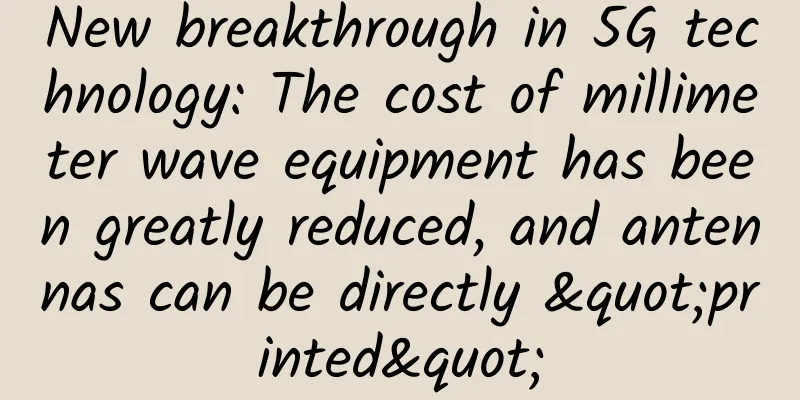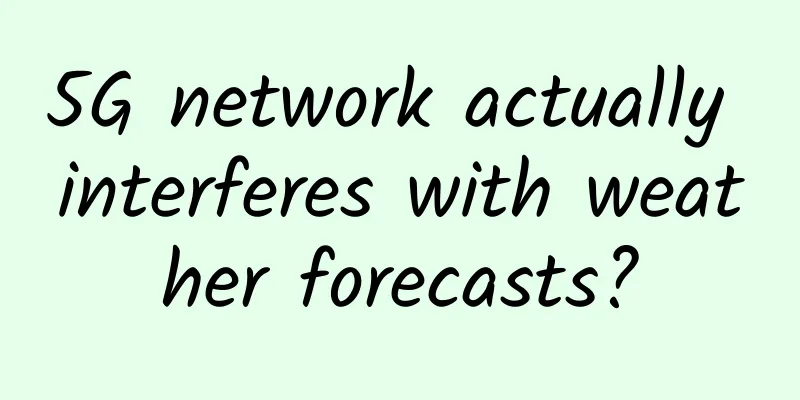New breakthrough in 5G technology: The cost of millimeter wave equipment has been greatly reduced, and antennas can be directly "printed"

|
Researchers at Georgia Institute of Technology, Nokia Bell Labs and Heriot-Watt University have found a way to implement low-cost backscatter radios that could enable devices to achieve “gigabit-per-second” 5G transmission speeds.
Backscattering technology means that the device itself does not generate signals, but achieves the purpose of information exchange by reflecting the transmitted signals. Backscattering can realize 5G millimeter wave communication, but the cost of millimeter wave 5G equipment is relatively high, and it generally requires multiple stacked transistors. The researchers used a technique called single-transistor high-order modulation to reduce the number of transistors needed in the device. After testing, these passive devices can transmit data securely and robustly in almost any environment. The research paper, titled "A printed millimetre-wave modulator and antenna array for backscatter communications at gigabit data rates," was published in Nature Electronics in early June. Paper link: https://www.nature.com/articles/s41928-021-00588-8 1. Drastically reduce the use of transistorsNormally, solving complex communication problems can be achieved by adding stacked transistors, but this will increase the cost of the device. "Our technological breakthrough enables devices to communicate at millimeter wave (mmWave) frequencies without a complete millimeter wave radio transmitter," said Ioannis (John) Kimionis, a doctoral student at Georgia Institute of Technology. "Even in low-frequency electronics, only a single millimeter wave transistor is needed, such as those in mobile phones or WiFi." By enabling high-order modulation of a single transistor, the researchers eliminated the need to add additional mixing stages in backscatter communicators or millimeter-wave transceivers, and were able to compress the complexity of the front-end into a single high-frequency transistor, which reduces the number of transistors required for the device. "Our product is scalable for any type of digital modulation and can be applied to any fixed or mobile device," said Ioannis (John) Kimionis, a Ph.D. student at Georgia Tech.
2. Breakthroughs in backscatter technology expand the possibilities of 5G use casesThis technology can expand the application of 5G in the Internet of Things, such as energy harvesting. Researchers at the Georgia Institute of Technology recently demonstrated the use of a special Rotman lens to collect 5G electromagnetic energy from all directions. This confirms that the technology has the ability to transmit power to other sensors. Emmanouil (Manos) Tentzeris, a professor in Georgia Tech's School of Electrical and Computer Engineering, said backscatter technology has a wide range of applications, including the construction of high-speed personal area networks using zero-power wearable/implantable sensor devices, which can be used to monitor blood oxygen levels, detect glucose levels, and monitor heart or EEG function. Backscatter technology can also be used in smart home sensors that can monitor temperature, chemical composition, gas and humidity. Backscatter technology can also play a role in smart agriculture, such as detecting crop frost, analyzing soil nutrients, and even tracking livestock. 3. Additive manufacturing makes the technology more competitive in the market“The whole front end of our solution is not complex and is compatible with printed electronics,” Kimionis said. “We can print a mmWave antenna array and use it in a low-power, low-complexity and low-cost transmitter.” Tentzeris believes that reducing printing manufacturing costs will make their backscatter technology competitive in the market. Conclusion: Backscatter technology paves the way for 5G IoTThe backscattering technology created by researchers at Georgia Institute of Technology, Nokia Bell Labs and Heriot-Watt University can reduce costs by performing high-order modulation on single transistors, which reduces the need for transistors in devices. It can also improve the effect of millimeter waves in 5G communications and reduce signal attenuation. This breakthrough in backscatter technology enables devices to provide more scalable and robust communication systems for 5G IoT at a lower cost. |
<<: What is Wi-Fi 6, and how does it help expand broadband access?
>>: Learn Network TCP/IP Protocol Stack
Recommend
Friendhosting Halloween 30% off, 13 data center VPS monthly payment from 2.1 euros
Friendhosting has launched this year's Hallow...
5G CPE replaces fiber-to-the-home, and demand is booming in Europe, America and rural areas
2019 is known as the first year of 5G. In fact, s...
Ministry of Industry and Information Technology: Firmly grasp the historical opportunity of 5G development and accelerate the deployment and application of Internet of Vehicles
On April 1, the fourth plenary meeting of the Int...
What comes after 5G communications?
This topic seems a bit paradoxical. First of all,...
From ServiceMesh to Decentralized SOA Bus
I have talked about service mesh, API gateway and...
spinservers Spring Festival discount: $149/month 10Gbps San Jose server - 2*E5-2630Lv3 CPU, 256G memory, 2*1.6T SSD hard disk
spinservers is a site under Majestic Hosting Solu...
Seize the critical period for large-scale application of 5G
As of the end of April, more than 1.6 million 5G ...
5G+AI: Will it produce the effect of 1+1>2 in the future?
Since the information industrial revolution, peop...
Edge computing and 5G: What’s next for enterprise IT?
There are some obvious commonalities powering edg...
What will 5G technology bring to the three major operators?
Recently, against the backdrop of ZTE being sanct...
What are the excellent designs worth learning in NS?
I used to be a student, and now when I think back...
What does Wi-Fi 6 and 5G convergence look like?
With Wi-Fi 6 and 5G convergence, the connectivity...
How will 5G affect our lives?
5G is slowly rolling out in many countries around...
By 2028, the global 5G infrastructure market will reach US$80.5 billion
[[417378]] According to data released by market r...
How to accelerate enterprise innovation and transformation with the help of Wi-Fi 6?
Wi-Fi 6's expansion to 6GHz is further attrib...









